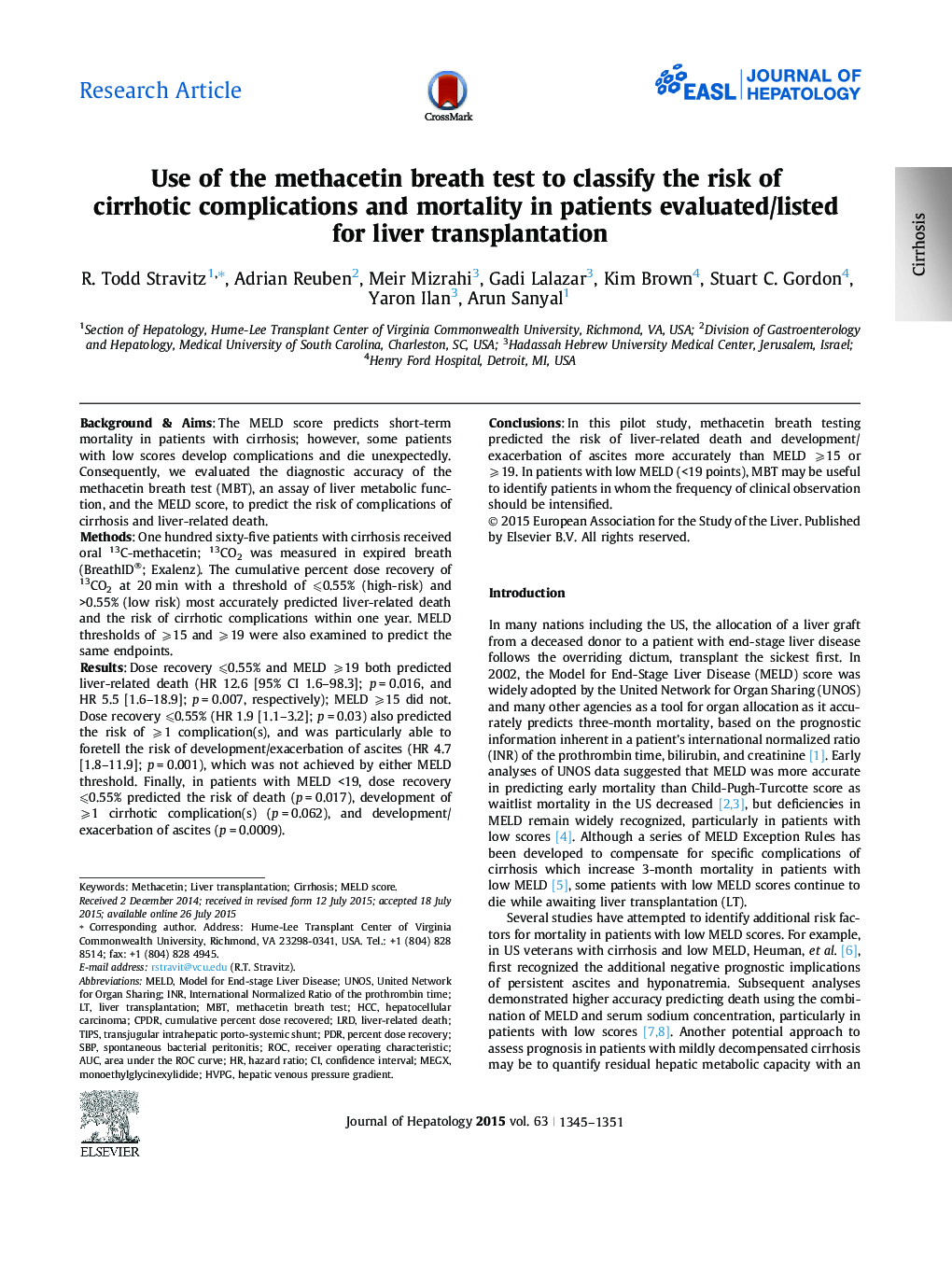| کد مقاله | کد نشریه | سال انتشار | مقاله انگلیسی | نسخه تمام متن |
|---|---|---|---|---|
| 3313632 | 1211117 | 2015 | 7 صفحه PDF | دانلود رایگان |
Background & AimsThe MELD score predicts short-term mortality in patients with cirrhosis; however, some patients with low scores develop complications and die unexpectedly. Consequently, we evaluated the diagnostic accuracy of the methacetin breath test (MBT), an assay of liver metabolic function, and the MELD score, to predict the risk of complications of cirrhosis and liver-related death.MethodsOne hundred sixty-five patients with cirrhosis received oral 13C-methacetin; 13CO2 was measured in expired breath (BreathID®; Exalenz). The cumulative percent dose recovery of 13CO2 at 20 min with a threshold of ⩽0.55% (high-risk) and >0.55% (low risk) most accurately predicted liver-related death and the risk of cirrhotic complications within one year. MELD thresholds of ⩾15 and ⩾19 were also examined to predict the same endpoints.ResultsDose recovery ⩽0.55% and MELD ⩾19 both predicted liver-related death (HR 12.6 [95% CI 1.6–98.3]; p = 0.016, and HR 5.5 [1.6–18.9]; p = 0.007, respectively); MELD ⩾15 did not. Dose recovery ⩽0.55% (HR 1.9 [1.1–3.2]; p = 0.03) also predicted the risk of ⩾1 complication(s), and was particularly able to foretell the risk of development/exacerbation of ascites (HR 4.7 [1.8–11.9]; p = 0.001), which was not achieved by either MELD threshold. Finally, in patients with MELD <19, dose recovery ⩽0.55% predicted the risk of death (p = 0.017), development of ⩾1 cirrhotic complication(s) (p = 0.062), and development/exacerbation of ascites (p = 0.0009).ConclusionsIn this pilot study, methacetin breath testing predicted the risk of liver-related death and development/exacerbation of ascites more accurately than MELD ⩾15 or ⩾19. In patients with low MELD (<19 points), MBT may be useful to identify patients in whom the frequency of clinical observation should be intensified.
Figure optionsDownload high-quality image (275 K)Download as PowerPoint slide
Journal: Journal of Hepatology - Volume 63, Issue 6, December 2015, Pages 1345–1351
